Inclusion in the early years is a national priority. Nurseries across the country are seeing a consistent rise in the number of children with SEND and complex needs. If you’re nodding along, you’re not alone.
Tracking progress for children with SEND is essential for early identification and intervention, but also for celebrating the hard-fought, meaningful progress that might otherwise be missed.
This article explores why SEND frameworks for EYFS are needed and how you can implement one that actually works for your nursery.
Inclusion in the early years
Inclusion has always mattered, but it’s finally getting the attention it deserves at policy level with the government, the DfE and Ofsted. The latest EYFS Framework reaffirms the importance of keeping children with special educational needs and disabilities front and centre. Mirrored in the government’s new ‘Giving Every Child the Best Start’ strategy, and rightly so.
Although this isn’t brand new information for early years professionals, it’s worth noting that Ofsted’s new way of inspecting schools plans to include a separate evaluation area for inclusion. These changes to Ofsted inspections will start with schools and maintained nurseries in Autumn 2025 and expand to EYFS by 2026.
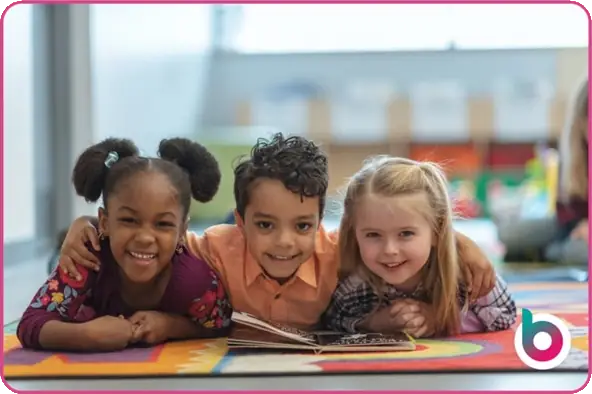
Meanwhile, the government’s long-awaited SEND and AP Improvement Plan is placing heavy focus on the early years, as explained in the 2025 Spending Review. There’s a big push for more accessibility for families with SEND children, including expanded provision and additional support for early years SEND-specific settings.
The message for inclusion in EYFS is clear: inclusion isn’t optional, it’s foundational.
Which makes it all the more important to have systems in place that help you track and support the progress of SEND children in a meaningful way.
Why SEND early years tracking should be different
It’s easy to feel conflicted. Should we be using the same framework for every child to keep things equal? Isn’t that fair?
Well, not always.
Equality gives every child the same. Equity gives every child what they need. And that’s the difference.
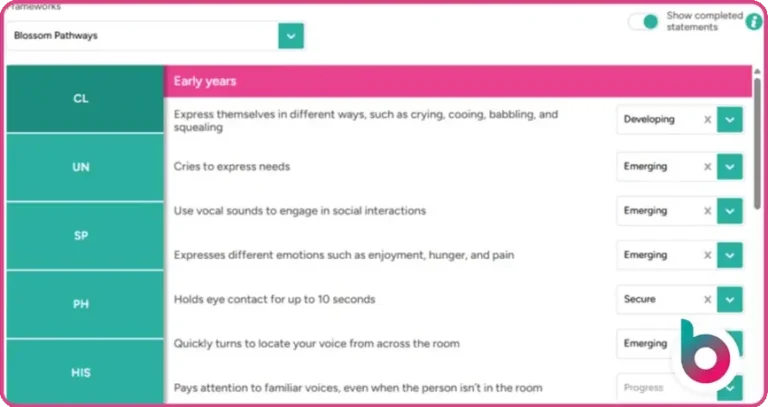
That’s why we partnered with SEND specialists and nursery teams like yours to create Blossom Pathways – our EYFS SEND tracking framework, designed specifically for children with additional needs. It’s built into Blossom and tailored to the unique journeys of children with SEND.
Let’s look at some of the top reasons why children with SEND should have access to alternative EYFS tracking frameworks.
Development priorities for SEND in early years
While typical EYFS tracking is mapped around set developmental milestones, children with SEND often benefit from a different route to get to the same destination.
Our Blossom Pathways framework allows practitioners to set bespoke, realistic goals based on the child’s needs, strengths and learning style.
These smaller, personalised steps mean progress is still measurable, just in a way that reflects independent development pace.
We haven’t just altered the seven areas of learning and development either – we have focused on seven of the crucial areas of learning for SEND children.
This isn’t about changing children’s access to your EYFS curriculum. We worked closely with SEND settings and SEND experts to pinpoint the areas of development most important for SEND children to master.
Blossom’s Pathway framework for SEND in early years focuses on:
- Communication and language
- Understanding
- Speaking
- Physical
- Health, independence and self-care
- Personal, social and emotional development
- Thinking
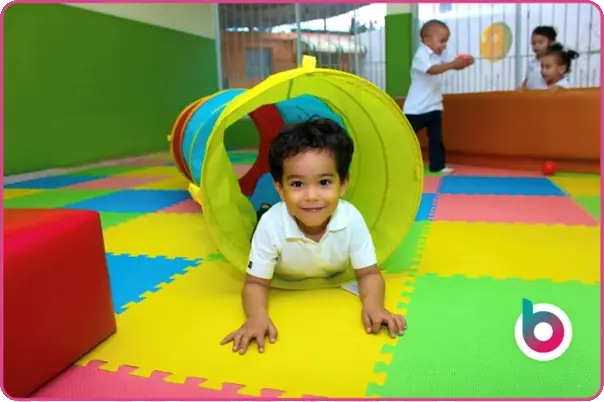
Staff confidence in supporting and tracking SEND children
Even the most dedicated team can feel unsure when tracking progress for a child with complex needs. Staff confidence varies, especially when practitioners have limited SEND training or experience.
That’s where a structured framework makes a difference. Blossom Pathways breaks down progress into manageable steps, giving your team a clear plan to follow. With built-in prompts and next steps, it supports everyone from Level 2 apprentices to your most experienced SENCo.
It’s a game-changer for staff retention, too, as we shared in the secret to retaining great nursery staff, feeling confident and valued goes a long way in keeping your team engaged.
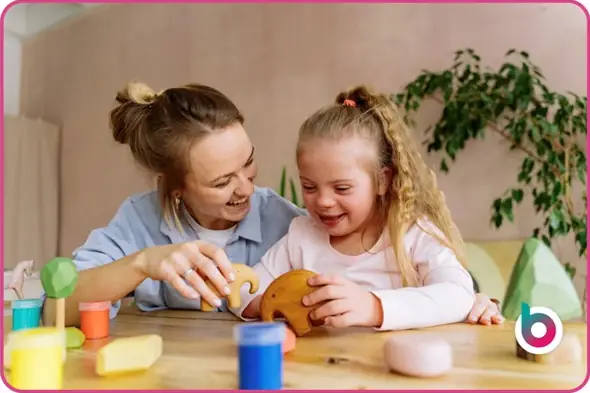
Parental support helps identify areas for growth
Parents of SEND children often carry a heavy mental load. Sharing clear, visual progress helps them feel more included in their child’s learning journey and strengthens the relationship between home and nursery.
Our EYFS SEND Framework lets you share tailored updates and celebrate small wins – because those moments matter just as much as the golden moments.
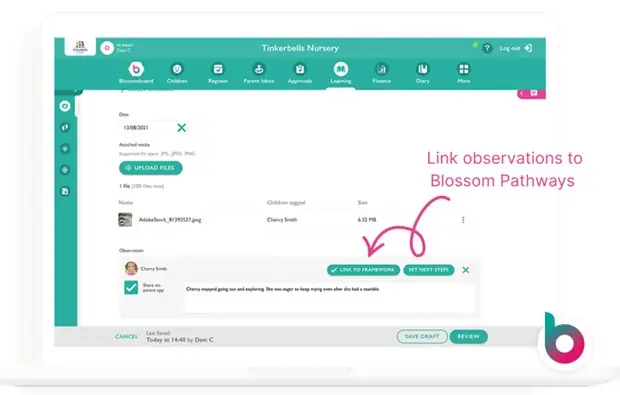
It also helps highlight areas where families might benefit from further support or targeted EYFS interventions. Building effective parent partnerships begins with open and honest communication. Giving parents insight into their child’s developmental progress shows that your team celebrate each success.
Helps with early years transitions
One of the most challenging parts of managing SEND in early years is ensuring a smooth transition plan. From small transitions like changing an EYFS activity, to the large transitions where they head off to primary school on their next adventure. Your nursery’s transition plans should prepare you for supporting all children.
When you have robust, clear tracking in place, you can share a detailed picture of the child’s development, making handovers easier and more accurate. It supports primary teachers, SENCOs, and even nursery agency staff in understanding the child’s starting points and support needs from day one.
EYFS SEND early identification
One of the strongest arguments for implementing a dedicated SEND framework in early years is its role in early identification of special educational needs and disabilities.
The government’s renewed focus on this is clear – from the push to streamline funded pathways into the Early Years SENDCo qualification, to expanding SEND-specific settings through their school-based nursery initiatives.

The average age for formal SEND diagnosis in the UK is still around nine years old, which means far too many children are navigating the early years of school without the support they need.
By tracking smaller, more specific developmental steps from the outset, early years practitioners are often the first to spot patterns or delays. This allows for quicker, targeted EYFS interventions that can make a lasting difference.
Early support improves not only learning and development outcomes but also a child’s self-esteem and wellbeing. When your nursery team can step in early, you’re not just helping them access the curriculum – you’re shaping stronger outcomes for their entire future.
How you can implement a SEND framework in your nursery
If you’re already using Blossom, you can access Blossom Pathways right away. It’s fully integrated and easy to use – just head to your children’s profiles and start mapping their unique learning journeys.
Not using Blossom for your nursery management software? Book a free demo with one of our nursery experts, and we’ll show you exactly how it works and compare it to your current platform or processes.